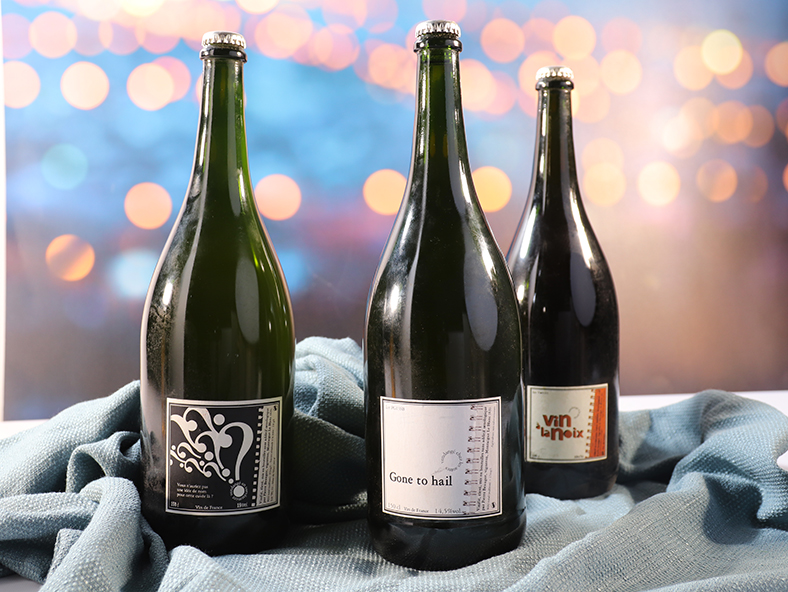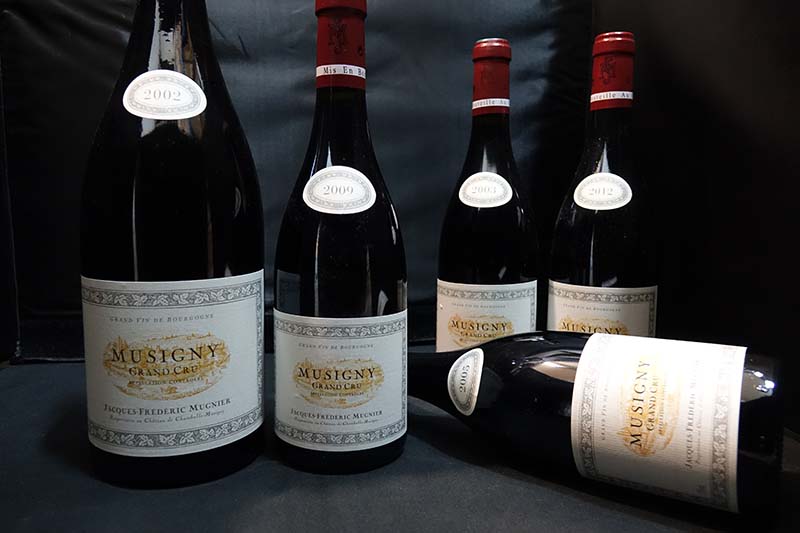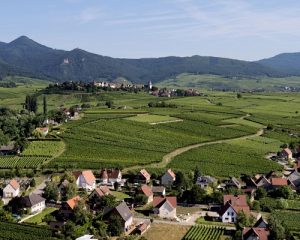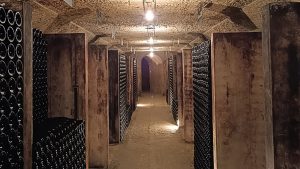
There are some new kids on the block, and they’re bringing all the energy of experiment and innovation into a pioneering movement with deeply respected roots. We’re talking about Auvergne and the rising success of its natural producers. Here we look at the evolution of this movement and dive into the details of some of the region’s up-and-coming winegrowers.
Auvergne, a new Promised Land for wine lovers
The unstoppable wave of interest and demand for natural wine has been quite an opportunity for certain regions, notably in the Loire, with little-known and emerging appellations such as Jasnières, where we find Domaine de Bellivière, and Coteaux-du-Layon. Amongst these, we especially find bottles from the rolling landscape of Auvergne creeping slowly but surely into the glasses and wishlists of wine connoisseurs. In a similar vein to the Jura, this region seems to be attracting the attention of younger wine lovers who seek natural produce with an easy-drinking profile.
This breakthrough has been quite striking. Since the beginning of the 2000s, a new generation of wine growers has established itself in Auvergne – which we find towards the south-east of France -, a group comprised of principled producers determined to craft high-quality, organic wines whilst restoring the image of a terroir that has long been underestimated. Whether by nature or design, they all lean firmly towards, well, natural production methods, and this is a phenomenon in its early days. Just a few years ago, this viticultural area, despite its deep roots, was virtually unheard of – even among connoisseurs –, making its flight to success all the more impressive. Auvergne wines began to appear at auction around two or three years ago.
The work of these producers to put their beloved region into the spotlight has been no easy task, but once the ball was rolling, it didn’t need much pushing. This is because Auvergne’s assets really speak for themselves. Fine terroirs with diverse soils – some rich in sand and quartz, others in clay and basalt – that serve as a nourishing abode for Gamay, Pinot noir, and Chardonnay grapes. The resulting wines are appreciated for their freshness, their minerality, and their fluid mouthfeel. Some are vinified using infusion, or otherwise following semi-carbonic maceration, and these processes contribute to the easy-drinking nature of these flavourful cuvées. Overall, this is a style that suits the tastes of the day, with consumers seeking wines that are supple and pleasant on the palate.
Auvergne’s big names
Patrick Bouju
As 2020 came to a close, several Auvergne producers featured in our top regional rankings, starting with Patrick Bouju, a real catalyst in this push for renewal in the region. At his poetically-named domain, La Bohème, Patrick has inspired and even trained a decent number of Auvergne’s highly-successful producers, including Aurélien Lefort, François Dhumes, and Vincent Marie. Formerly an IT technician, this audacious vintner took steps along the path of his true vocation during the 1990s, taking on the full-time responsibility of running a domain in 2008. Perhaps the most widely-known of the region’s producers, Patrick cultivates his vines as naturally as possible with the help of a trusty horse, and the grapes are then vinified in an equally chemical-free environment without over-processing his produce.
Over 130 bottles from his domain were sold at auction via iDealwine in 2020, with prices ranging from €15 to €282, the latter a magnum of the 2008 La Bohème cuvée, a single-parcel wine made from 100-year-old Gamay vines.
Aurélien Lefort
Another big name in Auvergne, Aurélien Lefort’s 2015 Sérum cuvée auctioned for €246 a bottle last year, with the rest of his produce consistently passing the €100 threshold. Formerly an artist and lithographer with a degree in Fine Art – he designs all his own labels – settled in the region in 2011, when he took up some parcels near Madriat. Aurélien is a vintner who attaches much importance to working the soil. All of his parcels are thus worked with a pickaxe and cultivated organically. He describes his vinification a precise and rigorous, taking particular care with the integrity of the grapes and destemming by hand when this is necessary. Dedicated to totally natural production, no additives or sulphur are used. Unsurprisingly, these are considered to be some of the region’s most beautiful wines.
Pierre Beauger
Pierre Beauger worked in viticultural regions across France (Saint-Emilion, Cornas, Bandol) and the world (USA, Chile) before eventually settling in Auvergne back in 2001. He cultivated 1.5 hectares of loaned vineyards and purchased his own land three years later. Today, he crafts his wines authentically, without the intervention of additives or technology. Only six of these bottles went up for auction at iDealwine in 2020, but they all sold for over €100 each. A two-half-bottle lot pf the Vieilles Peaux cuvée was sold for €262, for example.
L’Arbre Blanc
Bottles from Frédéric Gounan’s Domaine de l’Arbre Blanc also performed well at auction last year, with the Les Grandes Orgues cuvée going under the hammer for over €100. This is another case of a major career change, since Frédéric began as a mechanic, a profession he left to pursue another passion. After training in sustainable agriculture and learning the ropes of winegrowing with Emmanuel Giboulot in Burgundy, he moved to Auvergne in 1999. He now has 1.6 hectares of vines that are grown organically and biodynamically.
François Dhumes
Having trained with Patrick Bouju and Vincent Tricot, François Dhumes got his first vines in 2006 after completing a diploma in oenology and viticulture. Putting himself in the best position to embrace life among the vines, François also spent five years getting experience at other domains. He now cultivates five hectares as naturally as possible, as seen with the domains above. There is very little intervention once the grapes are in the winery (there is no stirring or pumping), and the four-week maceration takes place in an environment saturated with CO2. For now, these wines sell for relatively reasonable prices, with special bottles like a Magnum of Sarment Pepper reaching €80…but for how much longer?
Fortunately, there are still plenty of excellent Auvergne wines at affordable prices, such as those from Vincent Marie’s No Control domain, Maupertuis, Marie and Vincent Tricot, and Benoit Rosenberg. This is a phenomenon to watch, and it is gaining quite the loyal following!



